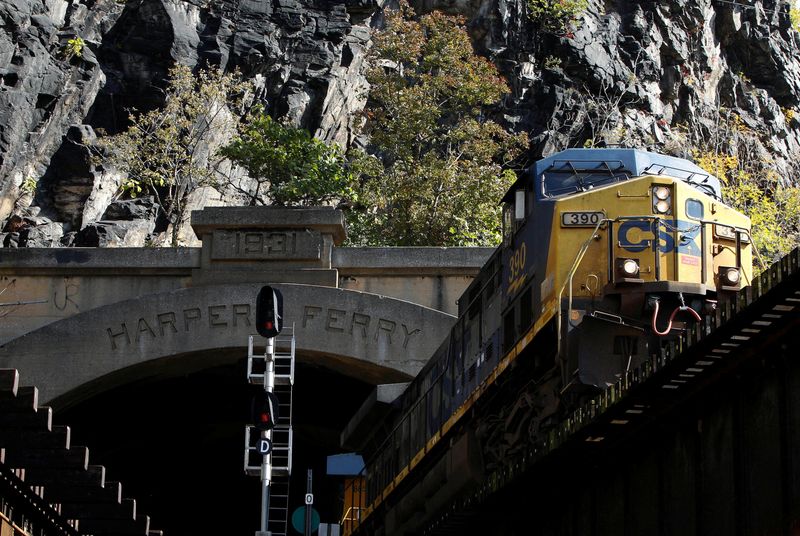By Lisa Baertlein
ATLANTA (Reuters) – CSX (NASDAQ:) this week will return to regular coal export operations on the Port of Baltimore after work crews cleared a part of the deep channel serving the second busiest U.S. commerce hub for outgoing coal shipments, the railroad’s CEO stated on Wednesday.
CSX is scheduled to obtain and cargo the primary massive ship at its Curtis Bay coal terminal on Saturday, Joe Hinrichs, CSX’s CEO stated on the Reuters Provide Chain convention in Atlanta.
“We’re now beginning to load trains at a daily tempo” to assist normalizing coal operations, Hinrichs stated.
For the final 10 days, the railroad has been loading coal on small ships that used smaller channels on the port, the CEO added.
CSX additionally serves CONSOL Vitality (NYSE:)’s Baltimore Marine coal terminal, together with rival Norfolk Southern (NYSE:).
Baltimore accounted for 28% of coal exports in 2023, in accordance with the U.S. Vitality Info Administration (EIA).
Earlier this week, work crews refloated and moved the Dali container ship that crashed into the Francis Scott Key Bridge on March 26, inflicting its collapse. The accident paralyzed commerce on the port that makes a speciality of coal, completed vehicles and different items.
Hinrichs stated CSX accurately estimated losses from the accident in April, when it forecast that the port closure may end result within the railroad shedding $25 million to $30 million per 30 days in coal income.
Based mostly on up to date export knowledge, success rerouting coal shipments to alternate ports and progress resuming commerce by way of Baltimore, the EIA earlier this month revised its 2024 coal export forecast up from its preliminary outlook issued final month.

The Might EIA forecast requires 2024 coal exports to fall 1.1% versus 2023. In early April, the company forecast a 5.3% decline.
The EIA’s March outlook, issued earlier than the bridge collapse, referred to as for development of about 1% this yr.

